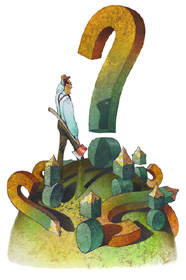 |
||
Overview Case Studies & Lessons Education & Training Research Publications
|
What is Collaboration and Why Collaborate?
Collaboration is a process in which two or more individuals or organizations collectively address issues that cannot be addressed individually. Ecosystems defy geopolitical boundaries and landownerships. They ignore state, tribal, and municipal boundaries, private property lines, and agency jurisdictions. Collaboration is an approach to bridging the boundaries that subdivide ecosystems so that resource management decisions can be better informed and effective. Collaboration enables the solving of problems that one agency, landowner, scientist or group cannot solve alone.
Click here for a summary of benefits associated with collaboration and how collaborative approaches respond to the changing times of resource management.
Click here for a Conservation Biology in Practice article on Making Collaboration Work by Julia Wondolleck and Steven Yaffee also see Making Collaboration Work from Island Press.
Click here to view a presentation by Julia Wondolleck on " What Enables People to Overcome Differences and Begin Working Together? "
Variations in Collaborative Processes
Our fifteen years of assessment and evaluation of several hundred collaborative resource management processes has highlighted the tremendous variation that occurs among collaborative efforts. The issues addressed may be big or small; involve public and/or private resources; and can last a few weeks or up to a decade or more. Nonetheless, collaborative processes do share several important dimensions in common. They are open, inclusive, voluntary, involve face-to-face interaction and are focused on problem-solving.
Click here for a report that describes the many variations of collaborative approaches in resource management .
This site was developed by the Ecosystem Management Initiative through a partnership with the US Forest Service and the US Department of Interior. Read more. |
|
Home | Site Map | Search | © 2009 Ecosystem Management Initiative. Terms of Use

 Why has collaboration become such a prevalent topic of conversation from the policy circles of Washington , D.C. to the community centers of rural America ? While it sounds good and certainly was a virtue extolled in kindergarten, why does it make sense to collaborate in resource management today?
Why has collaboration become such a prevalent topic of conversation from the policy circles of Washington , D.C. to the community centers of rural America ? While it sounds good and certainly was a virtue extolled in kindergarten, why does it make sense to collaborate in resource management today?